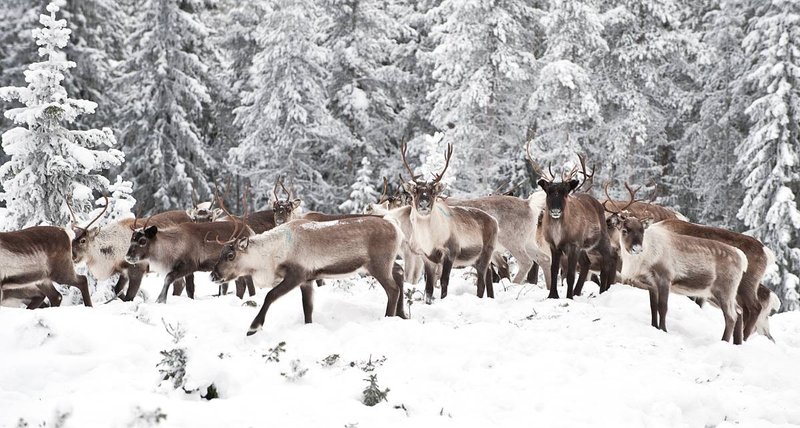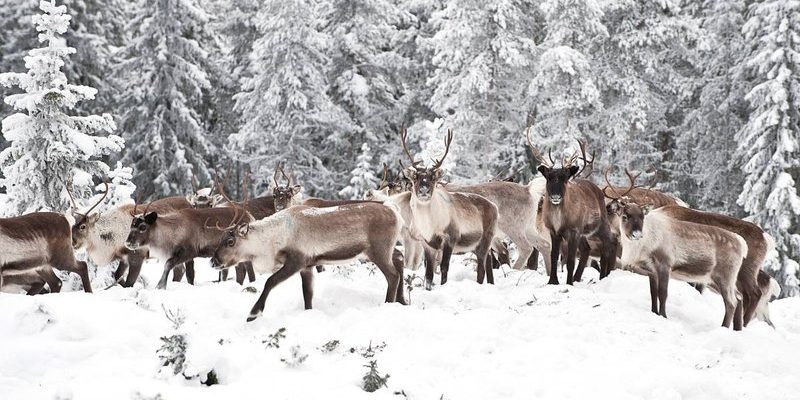
Imagine living in a place where the temperature can plummet to -40 degrees Fahrenheit! You might wonder how any living being could handle that kind of cold. Reindeer have evolved incredible strategies to cope with these brutal winters, from their thick fur to their special diets. In this article, we’ll explore how reindeer manage to not just survive but actually flourish in their icy habitats.
Adaptations for Cold Weather
Reindeer have several fascinating adaptations that help them withstand frigid temperatures. Their thick fur coat is one of the first lines of defense against the cold. This coat consists of long, hollow hairs that trap warmth while keeping the weight light. It’s almost like wearing a super warm, fluffy down jacket that doesn’t weigh you down!
Another important feature of reindeer is their layer of fat underneath the skin. This fat layer not only provides insulation but also serves as an energy reserve during the scarce months when food is hard to find. Together, these adaptations make reindeer incredibly resilient against the cold.
Interestingly, reindeer also have special blood circulation systems. Their nostrils warm the cold air they inhale, helping to maintain their core temperature. Isn’t that clever? This way, they can breathe in icy air without risking their health.
Finding Food in an Icy Wilderness
You might be curious about how reindeer find food when everything is covered in thick layers of snow. Their diet primarily consists of lichen, a type of fungus that grows on trees and rocks. In winter, lichen becomes a critical food source, as it can be found even under snow.
To reach this hidden treasure, reindeer have developed a technique called cratering. They use their hooves to dig through the snow, reaching down to uncover lichen. This behavior not only helps them find food but also creates small pits in the snow—an accidental gift for other animals, making it easier for them to forage as well.
During the summer months, when snow melts, reindeer switch diets to include grasses, young leaves, and flowering plants. This seasonal adaptability ensures they get the nutrients they need throughout the year.
Migration: The Great Journey
One of the most remarkable aspects of reindeer survival is their long migrations. Reindeer travel up to 3,000 miles annually in search of food, water, and better weather. This journey is not just a leisurely stroll; it’s a critical survival strategy.
During the harsh winter season, reindeer often move to lower altitudes where the snow is less deep, and food is more accessible. In the spring and summer, they migrate to the tundra for a bountiful feast of green vegetation. It’s like a road trip to the best buffet—only the buffet changes with the seasons!
This migratory behavior also helps them avoid predators. By changing locations frequently, reindeer can stay one step ahead of threats like wolves. Isn’t that a smart move?
Social Structure and Herd Dynamics
Reindeer are highly social animals, often living in large herds that can number in the thousands. This social structure is crucial for survival. Living in a group offers safety in numbers; more eyes means a better chance of spotting predators.
Herds can also help reindeer find food more efficiently. When one reindeer digs up lichen, others can follow suit, leading to communal feeding. Also, during migrations, herds can work together to navigate challenging terrain, making the journey safer and more efficient.
Interestingly, reindeer have strong bonds within their herds. Mothers are very protective of their calves, and maternal care plays a significant role in the survival of the young. You might see a mother using her body to shield her calf from the wind or even leading the way to better grazing spots.
Communication and Adaptability
Reindeer have developed unique ways to communicate with each other. They use a series of vocalizations, body language, and even scents to convey messages. For instance, they might grunt or snort to alert other members of the herd to danger.
Their adaptability extends beyond mere survival tactics. When faced with changing weather patterns or food shortages, reindeer can adjust their behavior and migratory routes. This ability to adapt is essential as climate change impacts their habitats and resources. Honestly, it’s a powerful reminder of nature’s resilience and the importance of adaptation.
Understanding Their Ecosystem Role
Reindeer are not just survivors; they play a vital role in their ecosystem. Their grazing habits help maintain the balance of plant life. By feeding on certain plants, they promote new growth and prevent overpopulation of specific species. This grazing behavior contributes to the overall health of the tundra ecosystem.
Moreover, reindeer serve as a food source for several predators, including wolves, bears, and even eagles. This connection helps support a complex food web, making them integral to their environment.
Their migratory patterns also help seed dispersal, as they move from one area to another, spreading plant seeds through their droppings. It’s nature’s way of ensuring that new life can flourish across the tundra.
Reindeers are the unsung heroes of the cold, harsh environments they call home. With their incredible adaptations, migratory behaviors, and social structures, they manage to thrive where many would struggle. By understanding how reindeer survive in these extreme conditions, we gain a deeper appreciation for the resilience of nature and the delicate balance of ecosystems.
So next time you see a reindeer, whether in a story or at the North Pole, remember that these animals are masters of survival, navigating the challenges of their icy world with grace and strength. They remind us that even in the harshest conditions, life finds a way.

